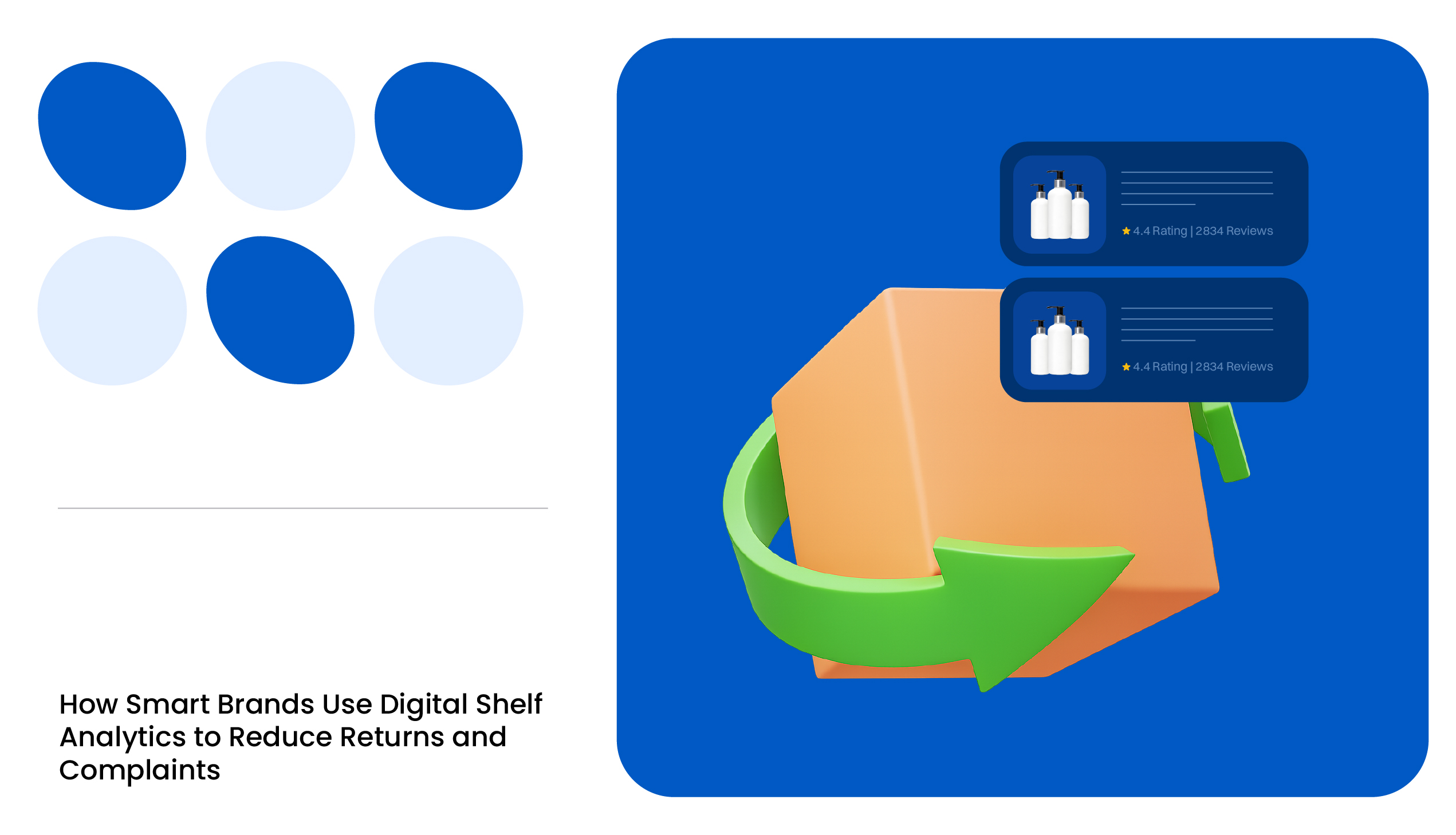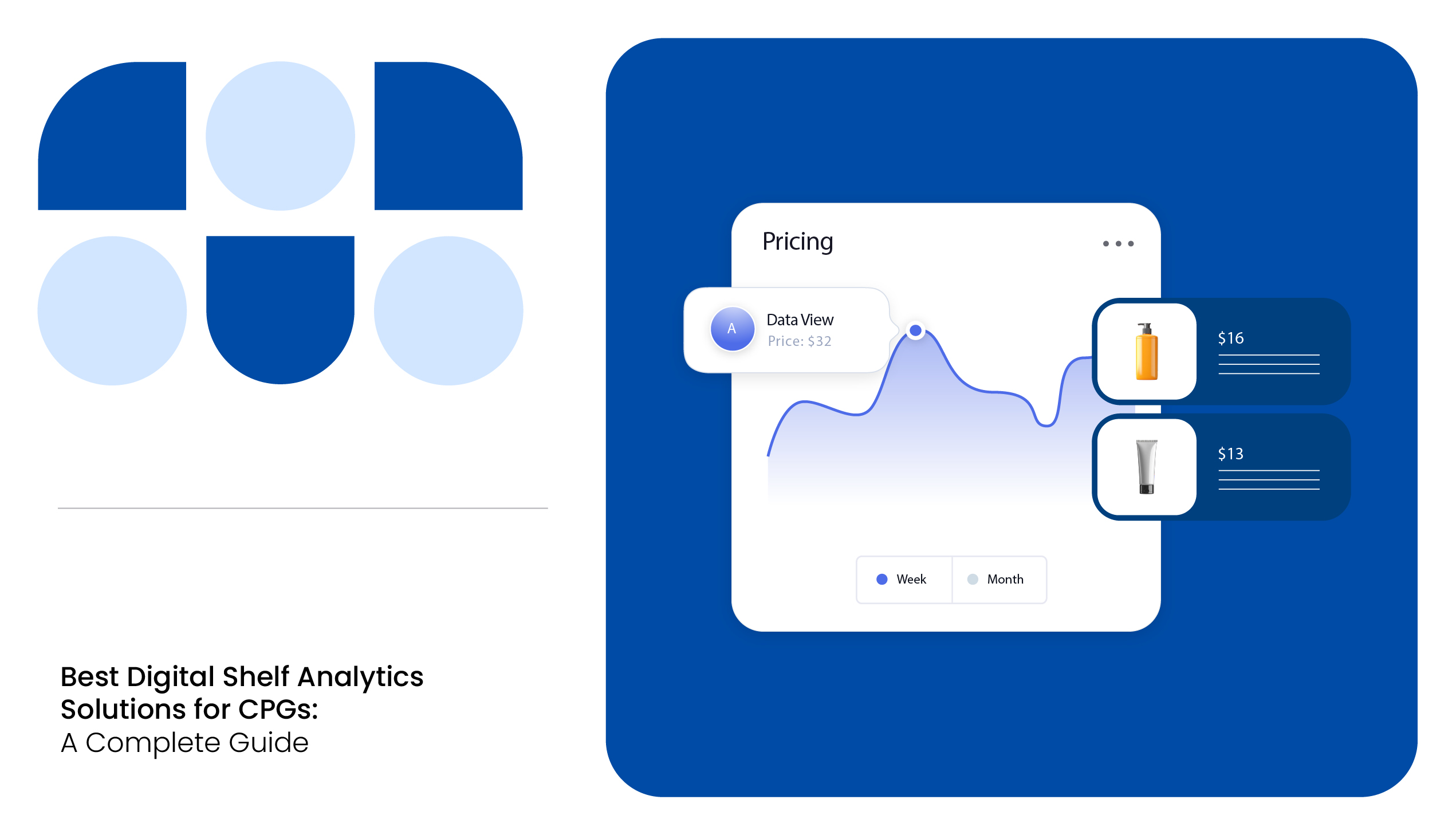Selling on Amazon isn’t just a game; it’s the big leagues. But let’s face it: too many sellers drop the ball, making rookie Amazon seller mistakes that kill their growth.
According to an Emarketer survey, 57% of consumers start their product search on Amazon. This presents more significant opportunities for sellers and brands to optimize their product listings on Amazon and monitor the pain points of consumers.
You can start by avoiding the biggest seller pitfalls, like poor product research and sloppy listings.
Digital shelf analytics software like MetricsCart could be your secret weapon for turning these mistakes into opportunities. By optimizing your listings, managing your inventory better, monitoring competitor performance, and boosting customer engagement, you can create a shopping experience that resonates with today’s savvy consumers.
6 Common Mistakes To Avoid on Amazon
Whether you are a seasoned seller or just starting your journey, identifying common Amazon FBA seller mistakes and avoiding them will help streamline your online business for optimum output.
These are some of the most common mistakes made by Amazon sellers:
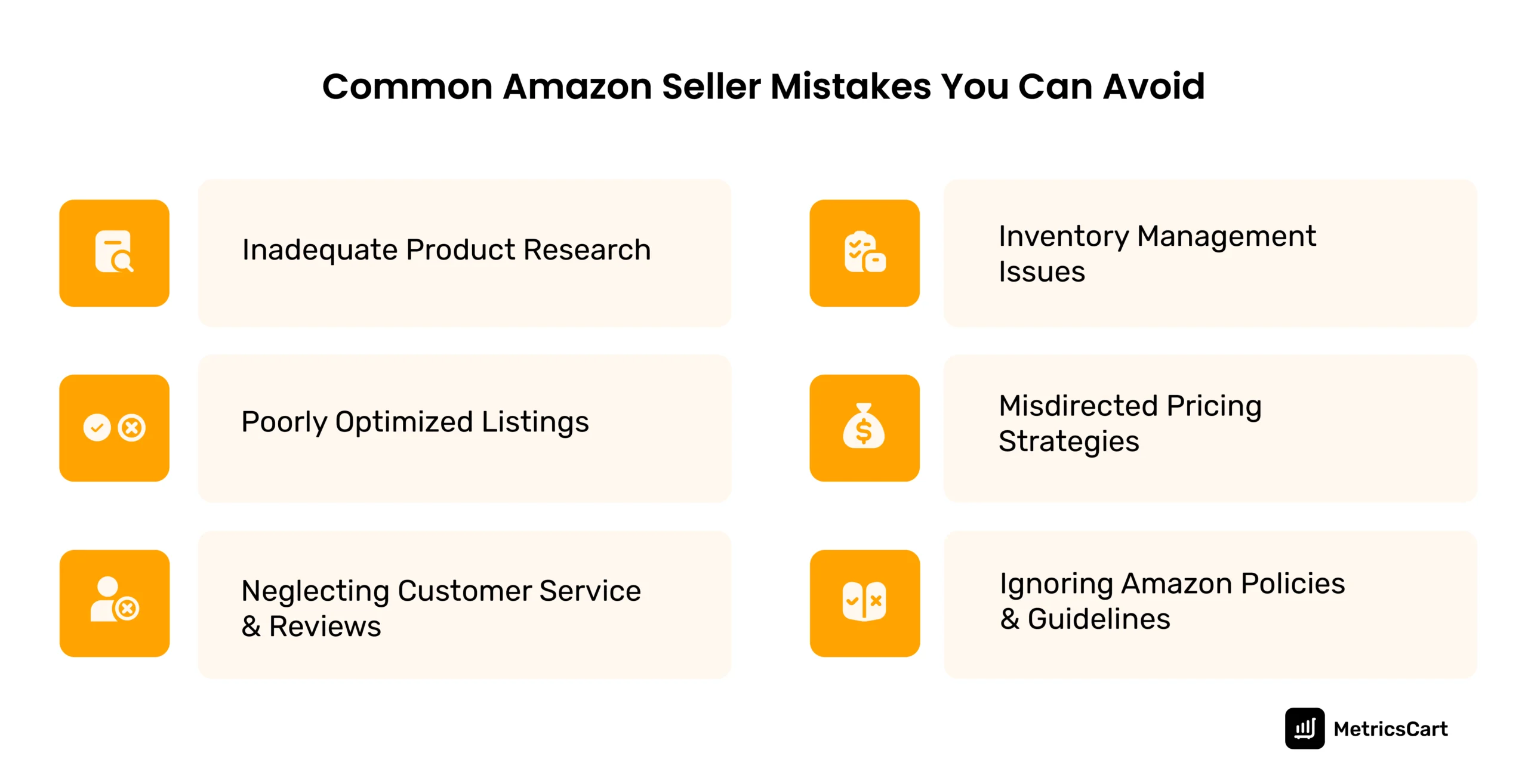
Inadequate Product Research
One of the most significant mistakes new sellers make is failing to conduct thorough product research.
Many sellers choose products based on personal preference rather than analyzing market demand and competition.
This oversight can lead to investing in items that have limited sales potential or are oversaturated in the market, resulting in poor performance.
READ MORE | Got questions about the Amazon Buy Box? Check out our blog on Frequently Asked Questions About Amazon Buy Box
Poorly Optimized Listings
Your product listing is your primary sales tool on Amazon, and inadequate optimization can significantly hinder visibility and conversion rates.
Common mistakes include using low-quality images, vague descriptions, and neglecting essential keywords.
A poorly optimized listing not only affects search rankings but can also diminish customer trust.
Neglecting Customer Service & Reviews
Customer service is paramount in maintaining a positive reputation on Amazon. Sellers often overlook the importance of responding promptly to customer inquiries and addressing issues effectively.
Reviews play a critical role in influencing consumer behavior on Amazon. Sellers who ignore customer feedback analysis miss valuable insights that could help them improve their products and overall shopping experience.
Poor customer service can lead to negative reviews, which can tarnish your brand’s reputation and impact future sales.
READ MORE | Confused on how to respond to negative reviews on Amazon? Check out our blog on Responding To Negative Reviews on Amazon: A Seller’s Guide
Inventory Management Issues
Effective inventory management is crucial for maintaining a healthy cash flow and ensuring product availability. Proper stock management can result in better customer satisfaction and improved sales, especially during the holiday season.
In most cases, without the assistance of an inventory management tool, most sellers either overstock or understock their products, leading to excess inventory or stockouts that result in lost sales opportunities.
Misdirected Pricing Strategies
Incorrect e-commerce pricing strategies can severely impact your competitiveness on the platform. As a seller or brand on Amazon, it is important to understand the dynamic pricing strategy of Amazon and tweak the price of your products according to this strategy.
Sellers often struggle with setting prices too high or too low without considering market dynamics, which can either drive customers away or leave money on the table.
Ignoring Amazon Policies and Guidelines
Amazon has set up specific terms of service for sellers and brands so that everyone has a fair playing field. These policies ensure that certain brands don’t take unwanted advantage of market forces, especially during holiday seasons or prime day sales.
Many sellers fail to follow these guidelines and end up being blacklisted by Amazon. A suppressed Buy Box can immensely impact the product’s organic ranking, and it will be tough for you to bring up the listing back.

How to Prevent These Amazon Seller Mistakes
Since you are now acquainted with the common mistakes made by Amazon sellers, let’s explore how these mistakes can be prevented.
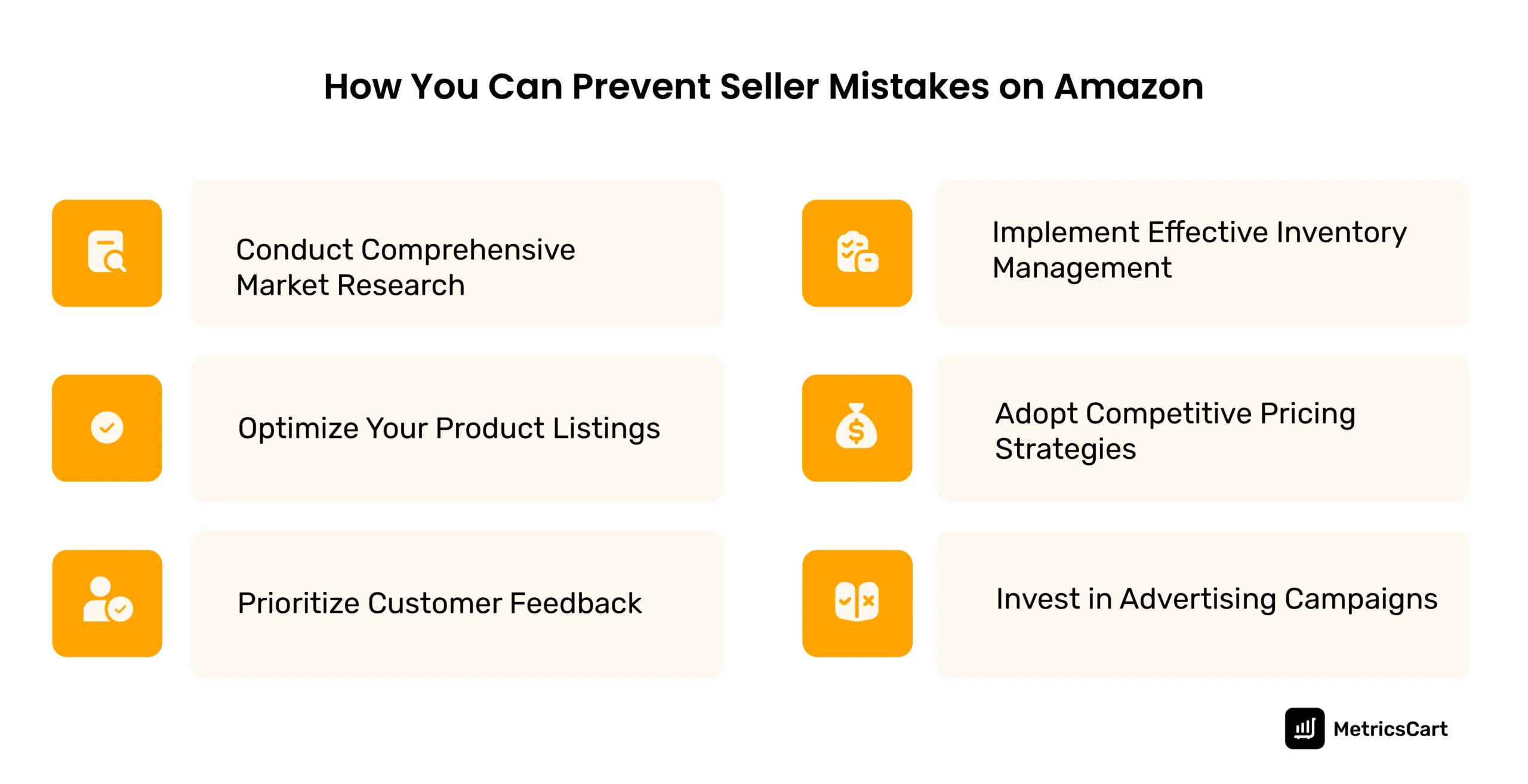
Conduct Comprehensive Market Research
Utilize tools that provide insights into recent market trends, high-performing retail categories, bestseller data, and competition analysis to avoid pitfalls related to poor product selection.
MetricsCart offers digital shelf analytics that allows you to assess demand for specific products and also identify opportunities that can help improve brand performance on e-commerce platforms like Amazon, Walmart, Target, etc.
By understanding market dynamics, you can make informed decisions about which products to sell.
Optimize Your Product Listings
Ensure your product listings are fully optimized by using high-quality images, A+ content with detailed descriptions, and relevant keywords throughout your content.
Digital shelf analytics tools can help you monitor keyword performance and suggest product page optimizations based on competitor analysis, ensuring that your listings stand out in search results.
Prioritize Customer Feedback
Establish a robust customer service strategy that includes prompt responses to inquiries and proactive management of reviews and feedback. This can help brands in creating relevant marketing campaigns and promotions.
MetricsCart’s review monitoring and analysis will enable you to identify trends in customer sentiment, helping you understand what aspects of your product need improvement or enhancement.
READ MORE | Looking for the best Amazon review management tool? Check out our blog on Best Amazon Review Management Tools of 2024
Implement Effective Inventory Management
By analyzing historical sales data and trends, you can make informed decisions about inventory levels and reorder points, ensuring you meet customer demand without overstocking.
Out-of-stock monitoring can prevent sales drops during peak seasons by optimally maintaining product stocks without complex labor processes.
Avoid the risks associated with inventory mismanagement by utilizing data-driven insights from MetricsCart’s analytics platform.
Adopt Competitive Pricing Strategies
To maintain a competitive edge, regularly analyze competitor pricing using a third-party price and price monitoring tool.
These solutions allow you to adjust your pricing dynamically based on market conditions and competitor activity, ensuring that your products remain attractive to potential buyers in the e-commerce space.
READ MORE | Want to know more about the different e-commerce pricing strategies? Check out our blog on Best Pricing Strategies for E-Commerce That Help Scale Business
Invest in Advertising Campaigns
Don’t overlook the power of advertising in driving traffic to your listings. Tracking the performance of your PPC campaigns allows you to optimize bids and target relevant keywords effectively.
This data-driven approach ensures that your advertising spend yields maximum returns.
Conclusion
By understanding common seller mistakes on Amazon, you can position yourself for success in the highly competitive e-commerce marketplace.
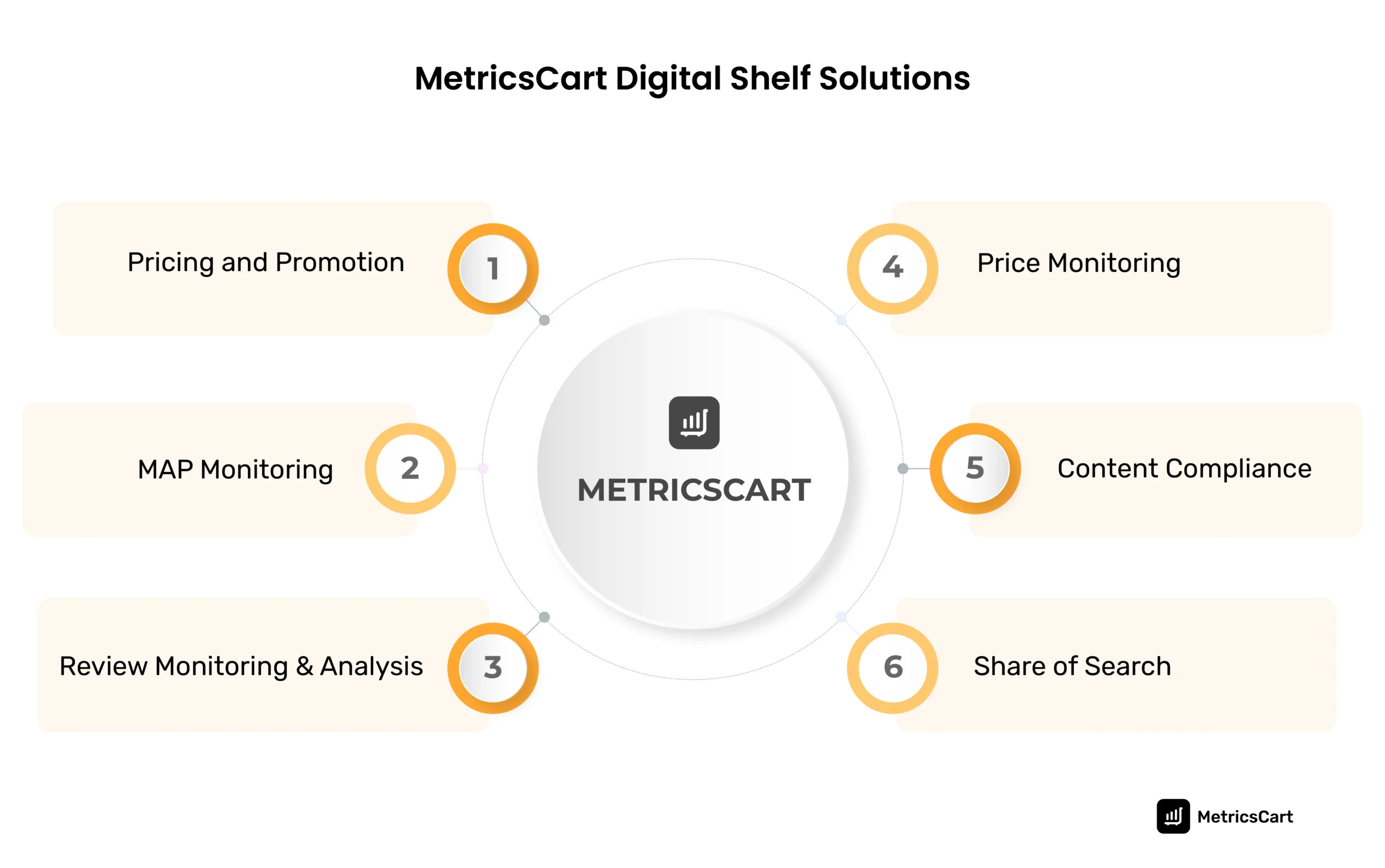
Digital shelf analytics solutions can be an assistive force in empowering your brand with the insights needed to conquer these challenges effectively.
From optimizing product listings to managing inventory dynamically and enhancing customer engagement through review monitoring and analysis, MetricsCart provides the tools necessary for sustainable growth on Amazon.
With the right approach, you can navigate the complexities of e-commerce market successfully and build a thriving business on one of the world’s largest online marketplaces.
FAQs
Yes, Amazon can reject seller applications for various reasons, including incomplete applications, discrepancies in submitted details, or if the seller does not meet specific requirements for the products they wish to list.
To avoid bad sellers on Amazon, look for verified seller ratings, read customer reviews, and check the seller’s return policy and shipping practices. Additionally, consider purchasing from sellers who are part of Amazon’s Fulfilled by Amazon (FBA) program for better service reliability.
Common Amazon listing errors include missing or inaccurate product information, improper categorization, misleading product images, and policy violations such as using prohibited keywords.





